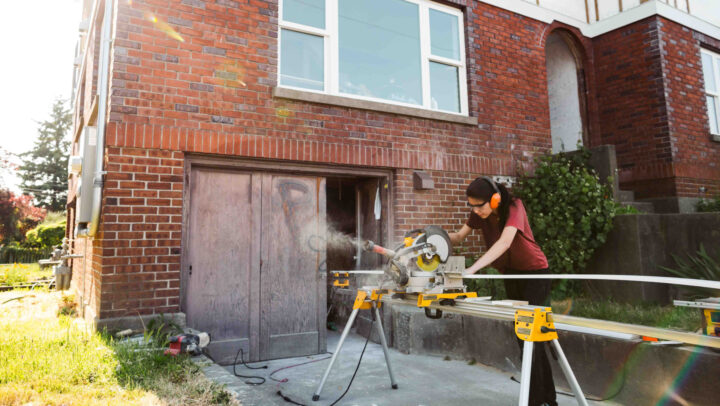How to Get the Lowest Mortgage Rate
You can influence the mortgage rate you receive — learn how.


Written by Alycia Lucio on February 25, 2025
Finding the best mortgage rate for you may sound like an impossible task. After all, interest rates constantly fluctuate, and that good-to-you rate you see advertised on a lender’s website may not even be the same rate you’ll receive when you apply for a mortgage. The good news is that while there are some mortgage rate determination factors that may be out of your control, there are still steps you can take to improve your chances of receiving a lower mortgage rate.
When mortgage lenders evaluate your application, they’ll consider several factors to determine your rate, such as their current cost of borrowing to fund the loan, your credit score, down payment size, and the amount of debt you have compared to your total income. It’s these elements that you can influence, and we’ll walk you through how to do so. Follow these nine steps to get the best mortgage rate.
1. Strengthen your credit portfolio
Your credit score and history play a crucial role in securing a low mortgage rate. Lenders use these factors to assess your creditworthiness and your lending risk. A higher credit score can translate to a lower interest rate, potentially saving you thousands of dollars over the life of your loan.
Lenders typically prefer that you have a minimum 620 credit score, depending on the type of loan you’re after. While there are lenders and loan programs that have lower credit minimums, improving our credit is one of the best ways to ensure the lowest mortgage rate possible.
To help improve your credit portfolio:
- Check your current credit score to see where you stand, so you can start making financial changes to improve your credit score if needed
- Check your credit report errors and dispute any inaccuracies
- Pay all your recurring bills on time and in full, if possible
- Reduce your credit utilization to below 35%
- Avoid applying for new credit accounts and making any large purchases with credit cards in the months leading up to your mortgage application
- Keep old credit accounts open to maintain a longer credit history
2. Save for a larger down payment
Making a larger down payment can significantly reduce your mortgage rate. It demonstrates financial stability and lowers the lender's risk, often resulting in a lower interest rate. Additionally, putting down 20% or more helps avoid private mortgage insurance (PMI) with a conventional loan, reducing your monthly payments further. A 2024 Zillow survey revealed 72% of mortgage buyers saved up for a down payment over time — making savings one of the most common sources of down payment funding.
To save for a larger down payment faster, try the following:
- Set up automatic transfers to a dedicated savings account for each paycheck
- Cut out unnecessary expenses and redirect the savings to your down payment fund
- Consider a side hustle or part-time job to help boost your income
- Sell unused items or valuables
- Look into down payment assistance programs in your area
- Put gift money from friends and family towards your down payment
3. Keep a steady job
Lenders prefer that borrowers have a stable employment history, with at least two years’ worth of consistent work within the same field. A steady job demonstrates reliability and the ability to make consistent mortgage payments over time. If you're self-employed, be prepared to provide additional documentation, such as tax returns and profit-and-loss statements, to prove your income stability.
Too frequent job changes may be a red flag for lenders, while taking on a new position in a new city is more common and less of a concern. More often than not, when someone accepts a new position in the same city or town, it often comes with a bump in pay, which can actually be better for your loan application. However, once you’re under contract, it’s best to avoid any changes to your finances, including a job change.
If a job change is unavoidable, your lender may ask for a written explanation for the change, which may require them to contact your new employer to verify employment.
4. Compare mortgage rate offers from multiple lenders
One of the most effective ways to secure the lowest possible mortgage rate is to shop around for lenders and compare their offerings. Real estate professionals recommend comparing two to three lenders to see how their rates and terms vary to find the best lender for your financial situation and home-buying goals. Here are a few tips and tricks for comparing mortgage rates:
- Include a mix of private banks, credit unions, and online lenders in your search
- Use online mortgage calculators and comparison tools to get an idea of what you may qualify for, before speaking with lenders
- Familiarize yourself with the current mortgage rates in your area
- Consider the additional fees beyond the interest rate, such as closing costs, taxes, HOA fees, and mortgage insurance, to get a well-rounded idea of what your total loan costs may look like
Remember that even the smallest difference in interest rates among lenders can lead to significant savings over the life of your loan. For instance, a 0.25% difference on a $300,000 30-year fixed-rate mortgage can save you more than $15,000 over your loan term. You also want to avoid unnecessary hard inquiries on your credit report when shopping for a mortgage.
To jumpstart your rate comparison, start the pre-qualification process with us at Zillow Home Loans*.
5. Consider buying down your interest rate
Buying down your interest rate involves paying mortgage points, also known as discount points, at closing. Each point typically costs 1% of your loan amount and lowers your interest rate by 0.25%. While this requires a larger upfront payment, it can lead to significant savings over the life of your loan.
To buy down your interest rate:
- Determine how long you plan to stay in the home
- Calculate the break-even point (when the savings from the lower rate outweigh the cost of the points)
- Consider your available cash for closing costs
- Discuss the option with your lender to determine if it's beneficial considering your financial situation and homeownership goals
- See if you qualify for a mortgage credit certificate, which allows limited-income borrowers to use a tax credit towards a portion of their mortgage interest for lower interest rates
Here's a preview of the current mortgage rate and APR trends:
6. Take advantage of first-time homebuyer programs
There are many first-time home buyer programs that offer low interest rates, down payment assistance, and other benefits that can bring you closer to owning a home. These programs are typically provided by state and local governments, as well as some non-profit organizations and even certain types of investment accounts.
The most common types of first-time homebuyer programs include:
- Down payment assistance programs
- Grants for down payments or closing costs
- Low down payment loan programs, offered as conventional, FHA, USDA, and VA loans
- The Good Neighbor Next Door Program, which applies to kindergarten teachers, firefighters, law enforcement, and emergency medical professionals
While it’s less common, some homebuyers choose to make a withdrawal from their traditional 401(k) or Roth IRA accounts. Depending on the type of retirement account you have and the criteria of the account, you may withdraw up to $50,000 or half of the value of the account, whichever is less, penalty-free to invest in your new home. Before doing this, it’s always recommended to speak with a tax professional first about the implications of withdrawing money from your retirement account.
Keep in mind that most loan programs typically define first-time home buyers as people who haven’t owned a home in the last two to three years. This means you may still be able to take advantage of certain programs, despite having bought a house in the past.
7. Consider all your mortgage loan options
Different types of mortgages come with varying interest rates and terms. It’s a good idea to familiarize yourself with all the mortgage options available to determine which best suits your financial situation and can offer you the lowest possible interest rate.
Here’s an overview of the most common loan types available:
- Conventional loans are offered by private lenders and typically come with competitive rates for borrowers with credit scores of 620 and above
- FHA loans are government-backed loans that accept credit scores as low as 500 with specific down payment requirements
- VA loans are available to eligible service members, veterans, and surviving spouses and offer competitive rates with no down payment requirement
- USDA loans are designed for rural homebuyers and typically offer lower rates and no down payments for eligible borrowers
8. Co-borrow with a reliable friend or family member
Co-borrowing involves applying for a mortgage with another person, such as a friend or family member. With co-borrowing, you’re getting the advantage of combining multiple financial profiles to potentially qualify for a much better interest rate than you would get on your own. Co-borrowing is beneficial if the person you’re applying for a mortgage with has a strong credit score and high income. Of course, your co-borrower is also someone who will own and likely live in the home with you, which is an important factor to consider.
9. Ask a parent or relative to co-sign on a mortgage
A co-signer is someone who agrees to back your mortgage if you default on your monthly payments. Unlike a co-borrower, a co-signer will not have any stake in the home, but they’ll still agree to undergo the underwriting process so the lender can evaluate their financial profile in addition to yours. A co-signer with good credit and high income can bolster your mortgage application and help you obtain better mortgage rates.
Getting the lowest mortgage rate possible will require planning, research, and sometimes creative solutions. Once you obtain the best mortgage rate you can get, you’ll want to consider a mortgage rate lock. Rate locks typically last between 30 and 60 days, and will protect you from rate increases, giving you enough time to close the deal on your new home.
*An equal housing lender. NMLS #10287
How much home can you afford?
At Zillow Home Loans, we can pre-qualify you in as little as 5 minutes, with no impact to your credit score.
Zillow Home Loans, NMLS # 10287. Equal Housing Lender
Get pre-qualifiedHow much home can you afford?
See what's in reach with low down payment options, no hidden fees and step-by-step guidance from us at
Zillow Home Loans.
Zillow Home Loans, NMLS # 10287. Equal Housing Lender
Calculate your BuyAbility℠
Related Articles
Get a mortgage with Zillow Home Loans
Go from dreaming to owning with low down payment options, competitive rates and no hidden fees. A dedicated loan officer will guide you until you have your keys in hand.

Zillow Home Loans, NMLS #10287. Equal Housing Lender.



